Pest control technology was introduced into the tropics without considering the specificity of their ecosystems and the risk of pollution was underestimated. Some volcanic soils (andosols) contain nanoclay (allophane) with a unique structure and porous properties compared to crystalline clays. Andosols are characterized by large pore volume and pore size distribution, a high specific surface area, and a fractal structure. These soils are more polluted than the other kinds of tropical soils but release less pollutants (chlordecone) to water and plants. The literature shows that the allophane microstructure favors accumulation and sequestration of chlordecone, an organochlorine pesticide, in andosols.
We used a numerical model to simulate the structure of allophane aggregates. The algorithm is based on a cluster-cluster aggregation model. From the simulated data, we derived the structural features, pore volume and tortuosity, and its transport properties, hydraulic conductivity and diffusion. We show that transport properties decrease because of the presence of allophane. We propose that low hydraulic conductivity and diffusion are important parameters to explain the high concentrations and trapping of pollutants in andosols.
1.
Introduction
In this paper, we are concerned with the sharp decay rates of solutions to the Cauchy problem for the isentropic Navier-Stokes equations:
which governs the motion of a isentropic compressible viscous fluid. The unknown functions $ \rho $ and $ u $ represent the density and velocity of the fluid respectively. The pressure $ p = p(\rho) $ is a smooth function in a neighborhood of a positive constant $ \bar \rho $ s.t. $ p'(\bar \rho)>0 $. $ T $ is the viscosity stress tensor given by $ T = \mu({\nabla} u+({\nabla} u)^t)+\nu({\mathop{{\rm{div}}}\nolimits} u)I $ with $ I $ the identity matrix. We assume that the constant viscosity coefficients $ \mu>0 $ and $ \nu $ satisfy $ \nu+\frac23 \mu>0 $. Throughout this article, by optimal time decay rate, we refer to the best possible decay rate in upper bound as many literatures, and the sharp time decay rate includes the best possible upper and lower bounds.
Using the classical spectral method, the optimal time decay rate (upper bound) of the linearized equations of the isentropic Navier-Stokes equations are well known. One may then expect that the small solution of the nonlinear equations (1.1) have the same decay rate as the linear one. Our work is devoted to proving the sharp time decay rate (for both upper and lower bound) for the nonlinear system.
In the case of one space dimension, Zeng [24] and Liu-Zeng [15] offered a detailed analysis of the solution to a class of hyperbolic-parabolic system through point-wise estimate, including the isentropic Navier-Stokes system. For multi-dimensional Navier-Stokes equations (and/or Navier-Stokes-Fourier system), the $ H^s $ global existence and time-decay rate of strong solutions with the initial perturbation small in $ H^s \cap L^1 $ are obtained in whole space first by A. Matsumura and T. Nishida [17], [18]. When the small initial perturbation belongs to $ H^3 $ only, using a weighted energy method, A. Matsumura [16] showed the time-decay rate $ (1+t)^{-\frac34} $ of upper bound in $ L^\infty $-norm. Since then, there are concrete development on the upper bound time-decay estimates: the optimal $ L^p $ (with $ 2\leq p \leq \infty $) upper bound decay rate was proved by G. Ponce [19], combining the spectral analysis on linearized system and the energy method for small initial perturbation in $ L^1 $. For the isentropic Navier-Stokes equations with artificial viscosity, D. Hoff and K. Zumbrun [6], [7] studied the Green's function and derived the $ L^p $ ($ 1 \leq p\leq\infty $) upper bound time decay rate of diffusive waves for the small initial perturbation belongs to $ H^m \cap L^1 $ with $ m\geq4 $. Liu and Wang [14] studied the point-wise estimates of the Green function of the linearized isentropic Navier-Stokes system in 3D and then analyzed the coupling of nonlinear diffusion waves, obtained the optimal (upper bound) decay rate. These results were further extended to the exterior problem [12], [11], or the half space problem [9], [10], [8]. Recently, Guo and Wang in [5] developed a new general energy method for proving the optimal (upper bound) time decay rates of the solutions to the dissipative equations in the whole space, using a family of scaled energy estimates with minimum derivative counts and interpolations among them without linear decay analysis.
When additional external force is taken into account, the external force does affect the long time behavior of solutions. The upper bound of time decay rates were studied intensively, see for instance [1] and [2] on unbounded domain, [22], [23] on the convergence of the non-stationary flow to the corresponding steady flow when the initial date are small in $ H^3 \cap L^{\frac65} $, and [4], [3], on the optimal $ L^p-L^q $ upper bound decay rates for potential forces.
The main goal of current paper is to establish the sharp decay rate, on both upper and lower bounds, to the solutions of (1.1) using relatively simple energy method. We remark that similar results had been pursued by M. Schonbek [20], [21] for incompressible Navier-Stokes equations, and by Li, Matsumura-Zhang [13] for isentropic Navier-Stokes-Poisson system. Although they share the same spirit in obtaining the lower bound decay rates, the feature of the spectrum near zero exhibits quite different behaviors, leading to different analysis. For instance, we explored the elegant structure of the higher order nonlinear terms of Navier-Stokes, when choosing conservative variables: density and momentum. The conservative form of the sharp equations provided a natural derivative structure in these terms, leading to the possibility of a faster decay rate estimate. We will make a more detailed comparison later in this paper.
Define $ n = \rho- \bar \rho $, and let $ m = \rho u = (n+ \bar \rho)u $ be the momentum. We rewrite (1.1) as
where $ \bar\mu = \frac{\mu}{\bar\rho} $, $ \bar\nu = \frac{\nu}{\bar\rho} $, $ c = \sqrt{p'(\bar \rho)}>0 $ is the sound speed, and
It is this structure of $ F $ that plays an important role in our analysis.
Our aim is to obtain a clear picture of the large time behavior of $ U = (n, m) $ in $ L^2({\mathop{\mathbb R\kern 0pt}\nolimits}^3) $ when $ U_0 = (\rho_0-\bar \rho,\rho_0 u_0) $ is sufficiently smooth and small. We introduce the following initial value problem of the linearized Navier-Stokes system corresponding to (1.2):
where $ \bar\mu = \frac{\mu}{\bar\rho} $, $ \bar\nu = \frac{\nu}{\bar\rho} $, $ c = \sqrt{p'(\bar \rho)} $. It is known that the $ L^2 $-norm of $ \widetilde U = (\widetilde{n} , \widetilde{m} ) $ decays at the optimal upper bound rate $ (1+t)^{-\frac34} $ for generic small initial data, see for instance [18]. A detailed proof on the optimal lower and upper bound rate will be given in the section 3 of this paper. In section 4, we prove that $ \|(U-\widetilde U)(\cdot, t)\|_{L^2} $ decays at a faster rate than $ \|\widetilde U(\cdot, t)\|_{L^2} $, under some reasonable conditions on the initial data. Therefore, $ \|U(\cdot, t)\|_{L^2} $ shares the sharp decay rate of $ (1+t)^{-\frac34} $.
Notation. For $ a \lesssim b $, we mean that there is a uniform constant $ C $, which may be different on different lines, such that $ a \leq Cb $. And $ a \approx b $ stands for $ a \lesssim b $ and $ b\lesssim a $.
We now state our main result.
Theorem 1.1. Assume that $ (n_0, m_0)\in L^1({\mathop{\mathbb R\kern 0pt}\nolimits}^3)\cap H^3({\mathop{\mathbb R\kern 0pt}\nolimits}^3) $, $ \delta_0 = : \|(n_0,m_0)\|_{L^1({\mathop{\mathbb R\kern 0pt}\nolimits}^3)\cap H^3({\mathop{\mathbb R\kern 0pt}\nolimits}^3)} $ is sufficiently small, and
then there is a unique global classical solution $ \widetilde U = (\widetilde{n}, \widetilde{m})\in \mathcal C([0,\infty); H^3({\mathop{\mathbb R\kern 0pt}\nolimits}^3)) $ of the linearized system (1.3) satisfying for some positive constant $ C $
and the initial value problem (1.2) has a unique solution $ U = (n, m)\in \mathcal C([0,\infty); H^3({\mathop{\mathbb R\kern 0pt}\nolimits}^3)) $. Moreover, let $ n_h = n-\widetilde{n} $ and $ m_h = m-\widetilde{m} $, then it holds that
As a consequence, there exists a positive constant $ C_1 $ such that
Remark 1.1. We remark that this theorem is valid under the condition (1.4) which is important in the lower bound estimate to the linearized problem. When (1.4) fails, the decay rate of the linearized system (1.3) depends on the order of the degeneracy of moments. Assume $ (n_0, m_0)\in L^1\cap H^3 $ and belong to certain appropriate weighted $ L^p $ spaces, similar situation happened also in the incompressible Navier-Stokes equations, c.f. [20], [21]. We also note that our condition (1.4) is weaker than those in most of previous results where the differentiability of Fourier transform of initial disturbance is required in general.
Remark 1.2. In [13], Li, Matsumura-Zhang proved the lower bound decay rate of the linearized isentropic Navier-Stokes-Poisson system, they only require $ |\widehat n_0(\xi)|>c_0>0 $ for $ |\xi|\ll 1 $ with $ c_0 $ a constant due to the special structure of the spectrum from the help of the Poisson term. This condition is proposed in Fourier space, similar to (1.4) in some sense. In our case, the spectrum is different and the different structure leads to different sharp decay rates.
2.
Basic energy estimates
In what follows, we will set $ n = \rho-\bar \rho $, $ u = u-0 $. We rewrite (1.1) in the perturbation form as
where $ \bar \mu = \frac{\mu}{ \bar \rho } $, $ \bar \nu = \frac{\nu}{ \bar \rho } $, $ \gamma = \frac{p'(\bar \rho)}{\bar \rho^2} $, and the nonlinear functions $ f $ and $ g $ are defined by
We assume that there exist a time of existence $ T>0 $ and sufficiently small $ \delta>0 $, such that a priori estimate
holds for any $ t\in[0,T] $. First of all, by (2.3) and Sobolev's inequality, we obtain that
Hence, we immediately have
where $ f(n) $ and $ g(n) $ are nonlinear functions of $ n $ defined by (2.2).
Next, we begin with the energy estimates including $ n $ and $ u $ themselves. The following results is essentially due to A. Matsumura and T. Nishida [17], [18].
Theorem 2.1. Assume that $ (n_0, u_0)\in H^3({\mathop{\mathbb R\kern 0pt}\nolimits}^3) $, then there exists a constant $ \delta_0>0 $ such that if
then the problem (2.1) admits a unique global solution $ (n(t), u(t)) $ satisfying that for all $ t\geq0 $,
where $ C $ is a positive constant independent of time.
The proof of this theorem is divided into several subsections.
2.1. Energy estimate for $ 0\leq k \leq 3 $
For $ k = 0 $, multiplying the first equation in (2.1) by $ \gamma n $ and the second equation in (2.1) by $ u $, summing up and then integrating the result over $ {\mathop{\mathbb R\kern 0pt}\nolimits}^3 $ by parts. By virtue of Hölder's inequality, Sobolev's inequality and the fact (2.4), we obtain that
Now for $ 1\leq k \leq 3 $, applying $ {\nabla}^k $ to (2.1) and then multiplying the first equation by $ \gamma{\nabla}^k n $ and the second equation by $ {\nabla}^k u $, summing up and integrating over $ {\mathop{\mathbb R\kern 0pt}\nolimits}^3 $. For $ k = 1 $ we have
For $ k = 2 $ we have
For $ k = 3 $ we have
Summing up the above estimates, noting that $ \delta>0 $ is small, we obtain that
2.2. Recover the dissipation estimates for $ n $
For $ 0\leq k \leq 2 $, applying $ {\nabla} ^k $ to the second equation in (2.1) and then multiplying by $ {\nabla}^{k+1} n $. The key idea is to integrate by parts in the $ t $-variable and to use the continuity equation. Thus integrating the results by parts for both the $ t $- and $ x $-variables, we obtain for $ k = 0 $ that
for $ k = 1 $, we get
and for $ k = 2 $ we have
Plugging the above estimates, using the smallness of $ \delta>0 $, we obtain that
Proof of Theorem 2.1. Multiplying (2.13) by $ \frac{2C_2\delta}{C_3} $, adding it with (2.9), with the help of smallness of $ \delta>0 $, we deduce that there exists a constant $ C_5>0 $ such that
Next, we define $ \mathcal E(t) $ to be $ C_5^{-1} $ times the expression under the time derivative in (2.14). Then we may write (2.14) as
Observe that since $ \delta $ is small, then there exists a constant $ C_6>0 $ such that
Then integrating (2.15) directly in time, we get
Using a standard continuity argument along with classical local wellposedness theory, this closes the a priori assumption (2.3) if we assume $ \|n_0\|_{H^3}+\|u_0\|_{H^3}\leq\delta_0 $ is sufficiently small. We can then extend the solution globally in time and complete the proof of Theorem 2.1.
3.
Spectral analysis of the semigroup
In this section, we consider the initial value problem for the linearized Navier-Stokes system
where $ \bar\mu = \frac{\mu}{\bar\rho} $, $ \bar\nu = \frac{\nu}{\bar\rho} $, $ c = \sqrt{p'(\bar \rho)} $.
In terms of the semigroup theory for evolutionary equations, the solution $ (\widetilde{n}, \widetilde{m}) $ of the linearized Navier-Stokes problem (3.1) can be expressed for $ \widetilde U = (\widetilde{n}, \widetilde{m})^ t $ as
which gives rise to
where $ B $ is defined as
What left is to analyze the differential operator $ B $ in terms of its Fourier expression $ A(\xi) $ and show the long time properties of the semigroup $ S(t) $. Applying the Fourier transform to system (3.1), we have
where $ \xi = (\xi_1,\xi_2,\xi_3)^t $, and $ A(\xi) $ is defined as
The eigenvalues of the matrix $ A $ can be computed by
which implies
The semigroup $ e^{tA} $ is expressed as
where the project operators $ P_i $ can be computed as
By a direct computation, we can verify the exact expression for the Fourier transform $ \widehat G(t,\xi) $ of Green's function $ G(t,x) = e^{tB} $ as
Indeed, we can make the following decomposition for $ (\widetilde n, \widetilde m) = G \ast \widetilde U_0 $ as
where
We further decompose the Fourier transform $ \widehat N $, $ \widehat M $ into low frequency term and high frequency term below.
Define
where $ (\cdot)_1 = \chi(\xi)(\cdot) $, $ (\cdot)_2 = (1-\chi(\xi))(\cdot) $, and $ \chi(\xi) $ is a smooth cut off function such that
Then we have the following decomposition for $ (\widetilde n, \widetilde m) = G \ast \widetilde U_0 $ as
To derive the long time decay rate of solution, we need to use accurate approximation to the Fourier transform $ \widehat G(t,x) $ of Green's function for both lower frequency and high frequency. In terms of the definition of the eigenvalues, we are able to obtain that it holds for $ |\xi|\leq\eta $ for some small positive constant $ \eta $ that
and we have
where
For the high frequency $ |\xi|\geq\eta $, we are also able to obtain that it holds for $ |\xi|\geq\eta $ that
and we have
where
Here $ R_0 $, $ \eta $ are some fixed positive constants.
4.
Time decay rate for linear semigroup
In this section, we apply the spectral analysis to the semigroup for the linearized Navier-Stokes system. We will establish the $ L^2 $ and $ L^p $ ($ 2\leq p \leq \infty $) time decay rate of the global solutions for the linearized Navier-Stokes system.
4.1. $ L^2 $-time decay rate
With the help of the formula for Green's function in Fourier space and the asymptotic analysis on its elements, we are able to establish the $ L^2 $ time decay rate. Indeed, we have the $ L^2 $-time decay rate of the global strong solution to the problem for the linearized Navier-Stokes system as follows.
Proposition 4.1. Let $ U_0 = (n_0, m_0)\in L^1({\mathop{\mathbb R\kern 0pt}\nolimits}^3)\cap H^l({\mathop{\mathbb R\kern 0pt}\nolimits}^3) $ with $ l\geq3 $, then $ (\widetilde n,\widetilde m) $ solves the linearized Navier-Stokes system (3.1) and satisfies for $ 0\leq k\leq l $ that
where $ C $ is a positive constant independent of time.
Proof. A straightforward computation together with the formula of the Green's function $ \widehat G(t,\xi) $ gives
here and below, $ R_0 $, $ \eta $ are some fixed positive constants. Therefore, we have the $ L^2 $-decay rate for $ (\widetilde n, \widetilde m) $ as
And the $ L^2 $-decay rate on the derivatives of $ (\widetilde n,\widetilde m) $ as
The proof of the Proposition 4.1 is completed.
It should be noted that the $ L^2 $-time decay rates derived above are optimal.
Proposition 4.2. Let $ U_0 = ( n_0, m_0)\in L^1({\mathop{\mathbb R\kern 0pt}\nolimits}^3)\cap H^l({\mathop{\mathbb R\kern 0pt}\nolimits}^3) $ with $ l\geq3 $, assume that $ M_n = \int_{{\mathop{\mathbb R\kern 0pt}\nolimits}^3}n_0(x) d x $ and $ M_m = \int_{{\mathop{\mathbb R\kern 0pt}\nolimits}^3} m_0(x) dx $ satisfies that $ M_n $, $ M_m $ are at least not all zeros, then the solution $ (\widetilde n,\widetilde m) $ of the linearized Navier-Stokes system (3.1) given by Proposition 4.1 satisfies for $ 0\leq k\leq l $
where $ C $ is a positive constant independent of time.
Proof. We only show the case of $ k = 0 $ for simplicity, the argument applies to the other orders of derivatives. From the formula of the Green's function $ \widehat G(t,\xi) $, we deduce that
here and below, $ \eta $ is a sufficiently small but fixed constant.
It is easy to check that
We then calculate that
Since $ n_0(x) \in L^1 $ implies $ \widehat{n}_0(\xi) \in C({{\mathop{\mathbb R\kern 0pt}\nolimits}^3}) $. If $ \widehat{n}_0(0) = \int_{{\mathop{\mathbb R\kern 0pt}\nolimits}^3}n_0(x) d x\neq 0 $, we deduce that $ \widehat{n}_0(\xi)\neq 0 $ for $ |\xi|\leq\eta $ when $ \eta $ is sufficiently small. One finds that, when $ M_n\neq 0 $,
For $ \widehat{m}_0 $, a similar argument yields that, when $ M_m\neq 0 $, we have
When $ M_n\neq 0 $, $ M_m\neq 0 $, with the help of the above analysis, using $ b\sim c|\xi|+O(|\xi|^3) $ for $ |\xi|\leq \eta $, we obtain that
If $ M_n\neq 0 $, $ M_m = 0 $, and by the conituinity of $ \widehat{m}_0 $ near $ \xi = 0 $, there exists a small enough constant $ \epsilon $ such that $ \epsilon\to0 $ as $ \xi\to 0 $, and
We thus use the help of spherical coordinates and the change of variables $ r = |\xi|\sqrt{t} $ to obtain that
In the case of $ M_n = 0 $, $ M_m\neq0 $, we can use a similar argument to obtain that
Combining the above estimates (4.1), (4.2), (4.3), (4.4) and (4.5), we obtain the lower bound of the time decay rate for $ {\widetilde n}(t,x) $ as
The lower bound of the time decay rate for $ {\widetilde m}(t,x) $ can be shown in a similar fashion. It is not difficult to derive that
then we find that
We then calculate that
A direct computation gives rise to
Combining the above estimates (4.6), (4.7) and (4.8), we obtain the lower bound of the time decay rate for $ {\widetilde m}(t,x) $ as
Then the proof of Proposition 4.2 is completed.
4.2. $ L^p $-time decay rate
In this subsection, we establish the following $ L^p $-time decay rate of the global strong solution to the linearized Navier-Stokes system with $ p \in [2,+\infty] $.
Proposition 4.3. Let $ U_0 = (n_0,m_0)\in L^1({\mathop{\mathbb R\kern 0pt}\nolimits}^3)\cap W^{l,p}({\mathop{\mathbb R\kern 0pt}\nolimits}^3) $ with $ l\geq 3 $, then $ (\widetilde n,\widetilde m) $ solves the linearized Navier-Stokes system (3.1) and satisfies for $ 0\leq k\leq l $ and $ p \in [2,+\infty] $ that
where $ C $ is a positive constant independent of time.
To prove Proposition 4.3, the following two lemmas in [6] are helpful.
Lemma 4.1. Let $ n\geq 1 $ and assume that $ \hat f(\xi) \in L^\infty \cap C^{n+1}({\mathop{\mathbb R\kern 0pt}\nolimits}^n/\{0\}) $, with
where $ \sigma_1, \sigma_2>0 $ and $ n>2-2\sigma_2 $. Then $ \hat f(\xi) $ is continuous at $ 0 $ and $ \infty $, and
where $ m_1\in L^1({\mathop{\mathbb R\kern 0pt}\nolimits}^n) $ satisfies $ \|m_1\|_{L^1({\mathop{\mathbb R\kern 0pt}\nolimits}^n)} \leq C(C') $, $ m_2 $ is the constant
and $ \delta $ is the Dirac distribution. In particular, $ \hat f(\xi) $ is a strong $ L^p $ multiplier, $ 1\leq p \leq \infty $, in the sense that, for any $ g\in L^p $,
where $ C $ depends only on $ |m_2|\leq \| \hat f\|_{L^\infty} $ and the constant $ C' $ above.
Lemma 4.2. Let $ \hat g(t,\xi) = \hat K(t,\xi)\hat f(\xi) $, where $ \hat K(t,\xi) = e^{-\vartheta|\xi|^2 t} $, $ \hat f(\xi)\in L^\infty\cap C^{n+1}({\mathop{\mathbb R\kern 0pt}\nolimits}^n) $, and
Then $ {\nabla}_x ^\alpha g(t,\cdot)\in L^p $ for $ t>0 $, and for all $ \alpha $, $ 1\leq p \leq \infty $, we have
In particular, $ \widehat{{\nabla}_x ^\alpha g(t,x)} = (i\xi)^\alpha \hat g(t,\xi) $ is a strong $ L^p $ multiplier, with norm bounded by $ C(|\alpha|,\vartheta)C't^{-\frac{|\alpha|}2} $, where the constant $ C(|\alpha|,\vartheta) $ depends only on $ |\alpha| $ and $ \vartheta $.
Now let us turn to the proof of Proposition 4.3.
Proof of Proposition 4.3. We first analyze above higher frequency terms denoted by $ \widehat {(\cdot)}_2 $. Recall that
We shall prove that the higher frequency terms are $ L^p $ Fourier multipliers with an exponential time decay coefficient $ C e^{-c_1t} $ for some constants $ c_1>0 $. For simplicity, we only show that $ \widehat {\mathcal N}_2 $ is an $ L^p $ Fourier multiplier at higher frequency as follows. It holds
By a direct computation, it is easy to verify
which gives rise to
here and below, $ R>0 $ is a given constant. Thus, from Lemma 4.1 it follows that the inverse Fourier transform of the term $ (1-\chi(\cdot))\left(e^{\lambda_2 t}+\frac{\lambda_2 e^{\lambda_2 t}}{\lambda_1-\lambda_2}\right) $ is an $ L^p $ multiplier with the coefficient $ Ce^{-c_1t} $. The other part of $ \widehat {\mathcal N}_2 $ at higher frequency can be written as
We can regard $ e^{-\frac12 (2\bar\mu+\bar\nu) |\xi|^2 t} $ as the function $ K(t,\xi) $ of Lemma 4.2, and the rest term satisfies the condition. Thus, the inverse Fourier transform of $ (1-\chi(\cdot))\frac{\lambda_2 e^{\lambda_1 t}}{\lambda_1-\lambda_2} $ is also an $ L^p $ multiplier with the coefficient $ Ce^{-c_1t} $. These facts imply that $ \widehat {\mathcal N}_2 $ at higher frequency is an $ L^p $ multiplier with the coefficient $ Ce^{-c_1t} $. Applying the similar analysis to the terms $ \widehat {\mathfrak N}_2 $, $ \widehat {\mathcal M}_2 $, and $ \widehat {\mathfrak M}_2 $, we can show that their inverse Fourier transform are all $ L^p $ multiplier with the constant coefficient $ Ce^{-c_1t} $. Then
for all integer $ k\geq 0 $, and $ p\in[2,\infty] $.
We also need to deal with the corresponding lower frequency terms denoted by $ \widehat {(\cdot)}_1 $. Recall that
which imply that for $ |\xi|\leq\eta $ that
for some constants $ c_2>0 $. Thus, by Hausdroff-Young's inequality with $ p\in[2, +\infty] $, we can obtain
Combining (4.9) and (4.10), we finally have for $ t>0 $ that
The proof of Proposition 4.3 is completed.
5.
$ L^2 $-time decay rate for nonlinear system
We are ready to prove Theorem 1.1 on the sharp time decay rate of the global solution to the initial value problem for the nonlinear Navier-Stokes system.
In what follows, we will set $ n_h = n-\widetilde n $ and $ m_h = m-\widetilde m $, then we have
where $ \bar\mu = \frac{\mu}{\bar\rho} $, $ \bar\nu = \frac{\nu}{\bar\rho} $, $ c = \sqrt{p'(\bar \rho)} $, and
Denote $ U_h = (n_h, m_h)^t $, we have the equivalent form of system (5.1) in vector form
where the nonlinear term $ H(\widetilde U, U_h) = (0, F(\widetilde U, U_h))^t $. Thus, we can represent the solution in term of the semigroup
which $ (n_h, m_h) $ can be decomposed as
Furthermore, in view of the above definition for $ \widehat{\mathfrak N}(\xi) $ and $ \widehat{\mathfrak M}(\xi) $, it is easy to verify for some constants $ c_3>0 $, $ c_4>0 $, $ R_0>0 $, we discover that
Thus, applying a similar argument as in the proof of Proposition 4.1, we have
for any non-negative integer $ k $ and
For readers' convenience, we show how to estimate $ \|{\nabla}^k {\mathfrak M}\ast H(t)\|_{L^2} $ as an example. The other two estimates can be obtained by the similar argument. Indeed,
5.1. $ L^2 $-time decay rate
In this subsection, we establish the faster decay rate for $ (n_h, m_h) $. We will start with an a priori assumption on a carefully chosen quantity $ \Lambda(t) $ defined in (5.8), and then later prove a better estimate with the help of the smallness of initial data.
We begin with following Lemma.
Lemma 5.1. Let $ r_1, r_2>0 $ be real, one has
and
where $ \epsilon>0 $ is a small but fixed constant.
Proposition 5.1. Under the assumptions of Theorem 1.1, the solution $ (n_h, m_h) $ of the nonlinear system (5.1) satisfies for $ k = 0,1,2 $ that
where $ C $ is a positive constant independent of time.
From (5.7), we deduce
which implies for a smooth solution $ (n,m) $ satisfying $ \|(n,m)\|_{H^3}<\infty $ that
Define
Proposition 5.2. Under the assumptions of Theorem 1.1, if for some $ T>0 $, $ \Lambda(t) \leq \delta_0^{\frac12} $ for any $ t\in[0,T] $, then it holds that
where $ C $ is a positive constant independent of time.
The proof of this Proposition 5.2 consists of following three steps.
5.2. Step 1: The basic energy estimates
Starting with (5.4), (5.5), (5.6) and (5.8), we have after a complicate but straightforward computation that
It is easy to verify that
Indeed, by virtue of Hölder's inequality and Gagliardo-Nirenberg's inequality, we obtain that
which implies that
Furthermore, exactly as in the estimate of the high order derivatives, we have
Similarly, it holds that
Thus, we also get that
Finally, we have
5.3. Step 2: The higher order energy estimates
In this subsection, we will close the a priori estimates and complete the proof of Proposition 5.2. For this purpose, we need to derive the time decay rate of higher order derivatives of $ (n_h,m_h) $. We will establish the following lemma.
Lemma 5.2. Under the assumption of Theorem 1.1, one has
In particular, it holds that
Proof. First of all, in view of (2.12), recovering the dissipation estimate for $ n $, we see that
Summing up (2.7) and (2.8) in the energy estimate for $ (n,u) $, we can directly derive
Multiplying (5.12) by $ \epsilon_1\frac{C_3}{C_2} $ with $ \epsilon_1>0 $ a small but fixed constant, adding it with (5.13), we deduce that there exists a constant $ C_4>0 $ such that
Next, we define
Observe that since $ \epsilon_1\frac{C_3}{C_2} $ is small, then there exists a constant $ C_5>0 $ such that
Then we arrive at
Denote $ S(t) = \Big\{\xi\big| |\xi| \leq \sqrt{\frac{3(1+\gamma)}{C_4}}(1+t)^{-\frac12}\Big\} $ the time-dependent $ n $-dimensional sphere. This decomposition allows us to estimate $ L^2 $ time decay depend on $ (\widehat {n}, \widehat {u}) $ for frequency values $ \xi \in S(t) $, then we obtain that
Hence we have
Multiplying the above equation by $ (1+t)^5 $, we obtain that
Integrating it with respect to time from $ 0 $ to $ T $, then we have
which implies that
Finally, we have
This completes the proof of this Lemma.
5.4. Step 3: Close the estimates
In this subsection, we first combine the above a priori estimates of (5.8), (5.9), (5.10), (5.11) and Lemma 5.2 together to give the proof of the Proposition 5.2. In deed, for any $ t\in[0,T] $, we have shown that
With the help of standard continuity argument, Proposition 5.2 and the smallness of $ \delta_0>0 $, implies that $ \Lambda(t)\leq C\delta_0^{\frac34} $ for any $ t>0 $. Moreover, we deduce the time decay estimate for $ (n_h, m_h) $ from (5.9), (5.10), (5.11), Lemma 5.2 and (5.14) that
Consequently, for any $ t\in[0,T] $ we have
From (5.11) and (5.15), thus we also get that
For $ {\nabla}^3 m_h $, in view of the (5.6), we see that
Hence, we finish the proof of the Proposition 5.1. Theorem 1.1 follows.
Acknowledgments
Y. Chen is partially supported by the China Postdoctoral Science Foundation under grant 2019M663198, Guangdong Basic and Applied Basic Research Foundation under grant 2019A1515110733, NNSF of China under grants 11801586, 11971496 and China Scholarship Council. The research of R. Pan is partially supported by National Science Foundation under grants DMS-1516415 and DMS-1813603, and by National Natural Science Foundation of China under grant 11628103. L. Tong's research is partially supported by China Scholarship Council.











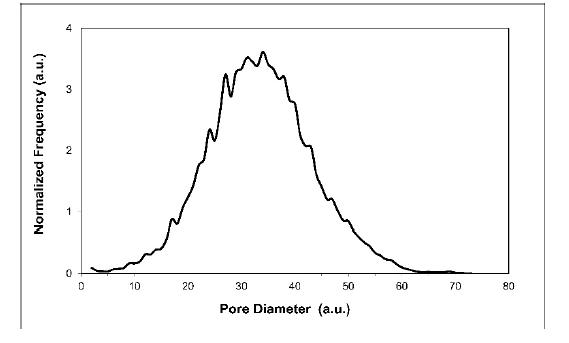
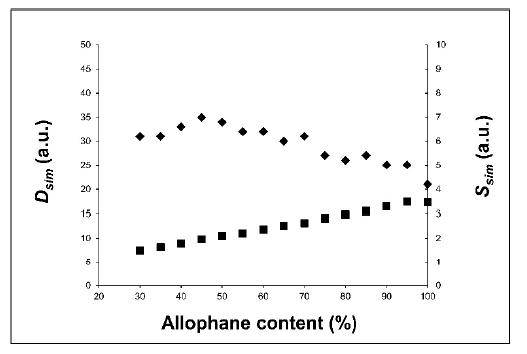
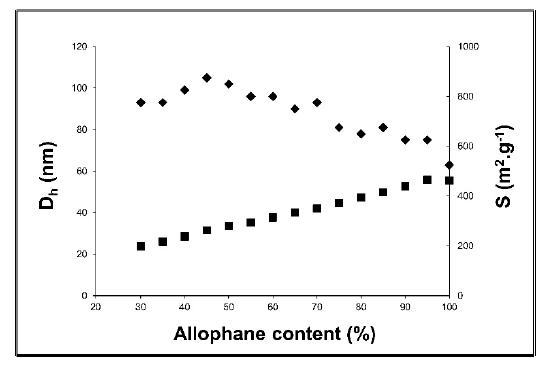
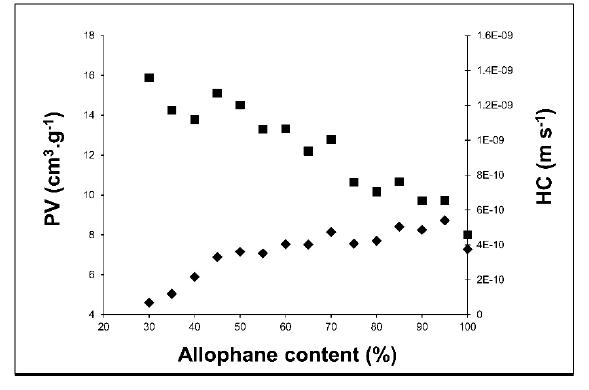
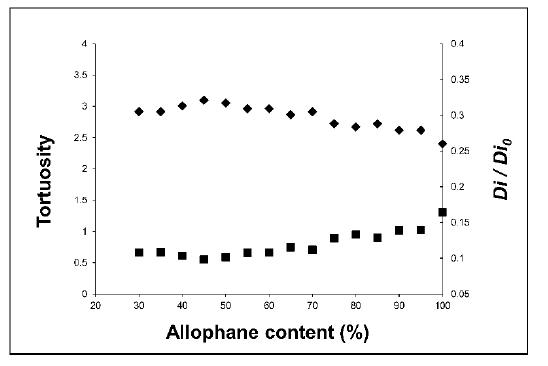


 DownLoad:
DownLoad: